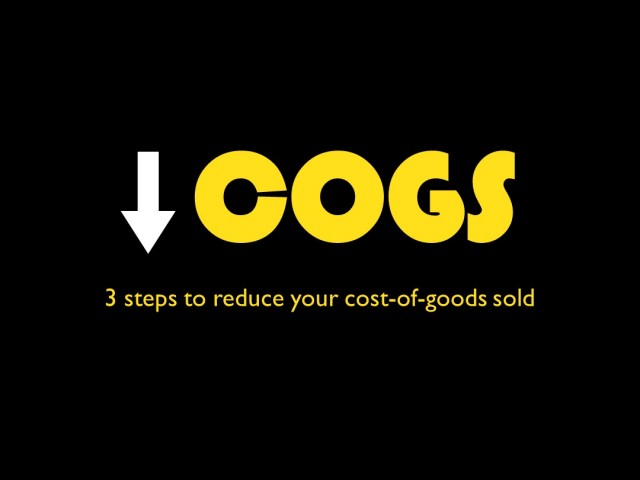Reducing your COGS
Sep 3, 2020, 6:01 AM
Managing your cost-of-goods sold (COGS) is crucial to the long-term success of your business. Reducing your COGS can, at first glance, seem like an overwhelming and complex task. But, with a good procedure it can be quick and effortless, and you’re more likely to keep on top of it. Let’s get it done in 3 simple steps.
1. Plan for success
Before you get into the finer details of cutting your COGS, you need to set yourself up for success. First, do a comprehensive costing of all your products, otherwise you are just ‘running blind’ (see our post on costing HERE). Second, establish your COGS benchmark ratio (e.g. 30% of Total Sales) and order your products from highest to lowest, this will give you a place to start (see our post on ratios HERE).
2. Question everything
Now we can work on each product, starting with the highest COGS to Total Sales ratio. When it comes to cutting your COGS there is rarely a ‘smoking gun’ (i.e. a massive cost which can be easily corrected) and even if there is, don’t stop there. Cost cutting is about making many small changes which really add up to benefit your bottom line. Assess your COGS in the following order:
a. Ingredient cost - review the cost of each ingredient. Can you get it cheaper? Can you switch to a more inexpensive brand?
b. Ingredient quantities - can you use less of the more expensive ingredients (without compromising taste/flavor)? Subtle changes here can really make a difference. Are there ingredients which don’t really add value to the product and can be removed?
c. Ingredient waste - if you can use reduce the wastage factor of the ingredients you are using; this will also improve your margin.
d. Packaging - for packaged goods, the cost of the packaging can be significant. Can you switch to a cheaper brand or alternative? Can you go direct to the manufacturer? Can the same packaging be used for multiple products, so you can justify buying larger volumes? Can you get it produced yourself?
3. Realise the savings
Reassess the COGS ratio of the products after you have made changes. Do they fall within your benchmark? If not, consider abandoning the product or re-inventing it so that it becomes cost effective.
Finally, communicate the changes with staff and ensure that your product assembly charts/instructions are adjusted since the spreadsheet savings now need to be converted into actual savings.

